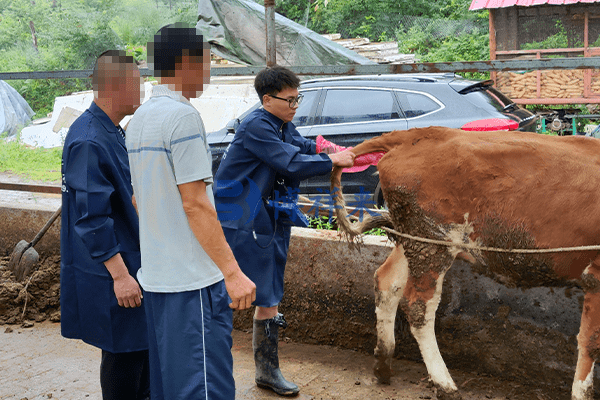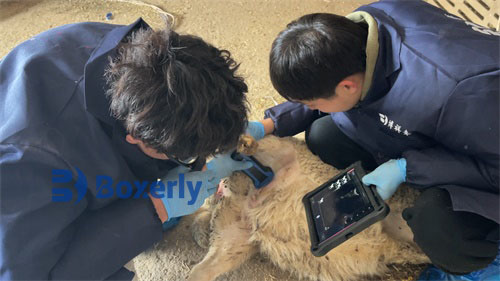Diarrhea in calves is a common disease among calves, which poses a serious threat to their healthy growth. Diarrhea in calves is often caused by improper feeding and management. After birth, it is necessary to regularly use imported cows for B-ultrasound examination of the digestive tract, and prevention of calf diarrhea can be addressed from the following aspects.

Pay attention to the hygiene of the feeding trough. After each feeding, the feeding trough should be carefully cleaned to ensure that the calves do not eat spoiled feed, and the trough should be disinfected at least once a week. After disinfection, rinse thoroughly with clean water to prevent residual disinfectant from causing harm to calves. And regularly check the digestive system condition of calves using imported cattle and B-ultrasound.
Pay attention to the hygiene of dairy products. After each use, the utensils used for feeding calves should be cleaned and disinfected regularly. Generally, 0.1% chlorhexidine should be used for disinfection once a week. In summer, more attention should be paid to cleaning and disinfecting the dairy utensils.
Do not feed cold milk, spoiled milk, or mastitis milk. The milk fed to calves should be heated to 35-38 ℃, and cooled or spoiled milk should be used. Ultrasound examination of milk with mastitis in imported cattle is also an important cause of diarrhea in calves.
Calf feeding should be timed and quantified. Feed three times a day during lactation, usually for 50-60 days. Feeding should be timed and quantified, avoiding sudden satiety and hunger. When feeding with a milk bucket or basin, it should not be too urgent or fast to prevent choking on the calf; In addition, if the esophageal groove reflex is incomplete due to excessive speed or urgency, a large amount of milk will flow into the anterior stomach, causing abnormal fermentation and affecting gastrointestinal digestion and absorption function. The daily feeding amount for calves can refer to the following feeding amounts: 5kg for 1-10 days old, 7kg for 11-20 days old, 8kg for 21-40 days old, 7kg for 41-50 days old, and 5kg for 51-60 days old.








